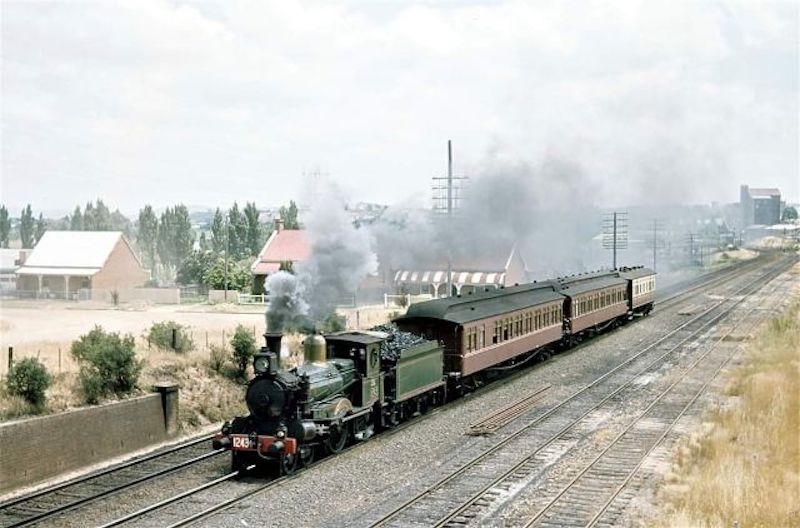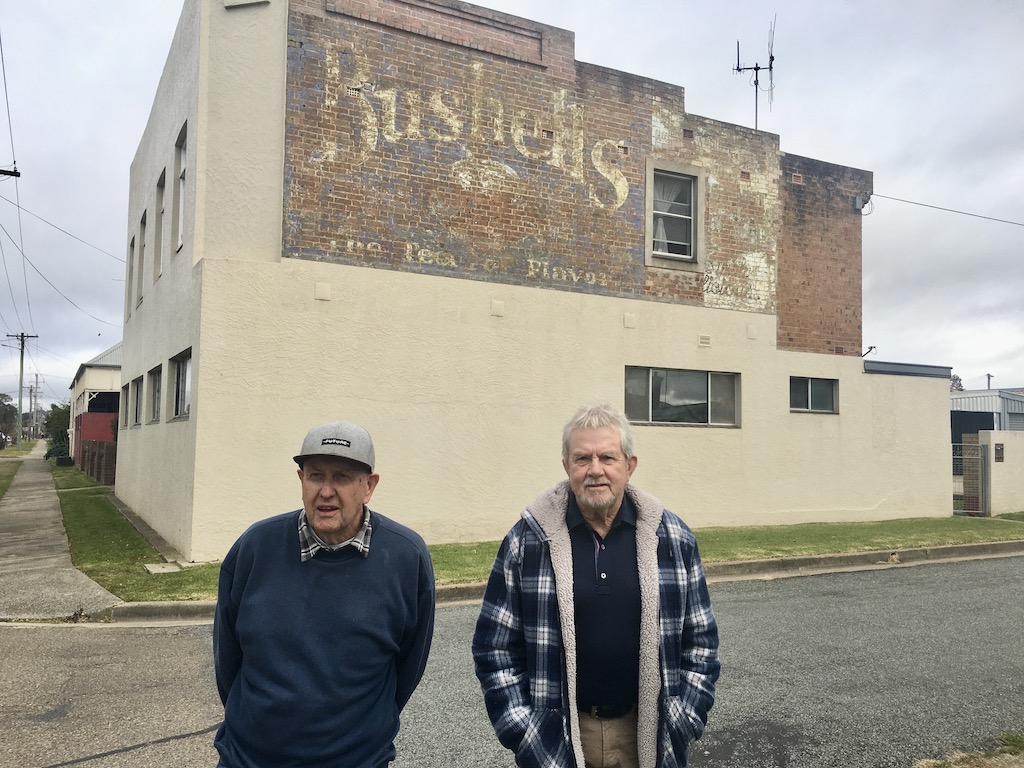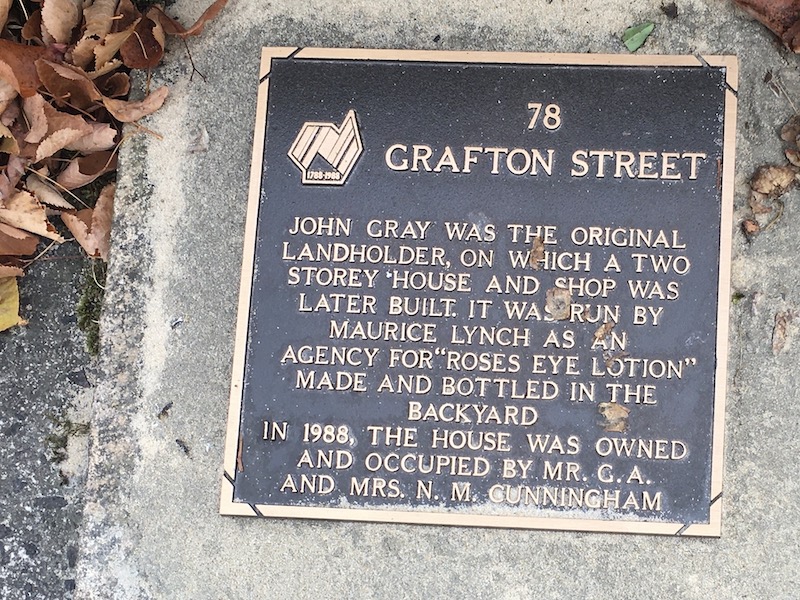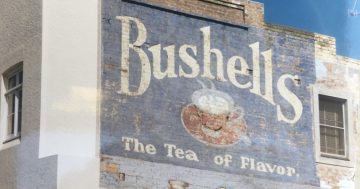
Conolly’s Mill’s large silo can be seen in the background at top right in this photograph of a steam train heading north out of Goulburn. The Crookwell railway line, which has since closed, can be seen on the right-hand side, alongside a shunting siding. Trains delivered grain to the mill and carried out its produce. Photo: David Stevenson collection.
On one end of the original Great South Road that became Grafton Street, John Wilson grew up watching a single mother toil away behind the counter of a grocer shop across the road.
Further along the same historic route that became Sloane Street, David Stevenson grew up surrounded by a sawmill and timber yard, the gasworks where coal was always burning for the town gas supply and Conolly’s Mill which was running flat-out.
A huge corrugated iron silo was built for the mill in 1925, and three shifts were engaged in the 1930s, exporting flour to China and Russia. The mill produced top quality flour, bran, pollard and chook food. It closed in the early 1970s. “You could smell the flour years after it closed,” John said.
John and David are now near neighbours in Grafton Street and marvel at the fading reminders of the 1950s, including the Bushells Tea sign on the corner of Grafton and Cove Streets above a former grocer shop.
John, who still lives in the house his father Jack built in 1952, remembers Gladys Shepherd was ever present in the shop. “You could get full on threepence worth of lollies,” he said. The shop’s front entrance facing Grafton Street has since been sealed off and rendered.
Gladys’ husband Harry died when their daughter Margaret was seven. “She couldn’t go out to work with three little children,” Margaret said, recalling the times she and her sister Helen and brother Billy helped their hardworking mother in the shop which opened from 8 am to 8 pm seven days a week.
“Everything was basic, we loved the bread being delivered, the milk being delivered and all those sorts of things, the people coming in,” Margaret said. “Everything was in bulk, none of this pre-packaging.
“People used to come in with their jug or their billy for the milk,” she said. “There was no sliced bread, it was a full loaf or half a loaf. Biscuits were all bulk Arnott’s: Milk Arrowroot, Milk Coffee, Iced Vovo’s, SAO, the basic ones that are still sold,” Margaret said.
The Shepherds lived in one of two flats upstairs. The shop and storage room occupied the ground level, where bags of potatoes and onions, biscuit tins and crates of Hopes Cordials soft drink were stowed.
Margaret left the shop in 1960, married motor mechanic Colin Reiher, whose parents had a fruit shop in South Goulburn, and they moved to Newcastle. When Gladys closed the shop its trading days ceased for good and she moved to Newcastle.
John became an apprentice electrical fitter at the Southern Tablelands County Council, left later and worked in New Zealand then returned and joined Telecom. He also turned his hand to driving taxis and as a mechanic, working at Southern Motors and later Mulwaree Council, when he drove tractors and trucks.
He says the peppercorn trees have always stood separating the lanes of traffic along Grafton Street which rumble with big trucks including Holcim and Divalls B-doubles, stock and hay carriers, poultry suppliers and loads of machinery.

David Stevenson and John Wilson on the corner of Grafton and Cove Streets, near what was Gladys Shepherd’s grocery shop. Her children Margaret, Helen and Billy spent much of their free time in the laneway bouncing tennis balls off the walls. Photo: John Thistleton.
Sprawling backyards once grazed by chooks have been filled with unit developments. Other than them the built streetscape is unchanged.
Sketch artist and keen student of architecture Steve Ayling says the definition of architectural language is “the image and presence of a building or a human-built environment, which includes all the visual or mental signs and meaning that a person can see and understand”.
“It follows that Grafton Street presents a unique architectural language that is intriguing, diverse and replete with historical and social significance for Goulburn,” he said.
Once Goulburn’s main street, many plaques can be read outside the street’s homes. The one at number 76 says: “John Gray was the original landholder, on which a two-storey house and shop were later built. It was run by Maurice Lynch as an agency for ‘roses eye lotion’ made and bottled in the backyard.”

In 1988 plaques including the one above were installed outside homes along Grafton Street. Photo: John Thistleton.
Another plaque at 62 Grafton Street recounts a circus used to perform in the area of land immediately at the rear of the property in Lagoon Street.
A train driver for many years, David Stevenson often sees people coming along reading each of the plaques. Joining in the spirit of history he fashioned his own plaque from concrete. With tongue in cheek he inscribed into the block of cement: “On this site in 1875 nothing happened.” He has sat back ever since, enjoying people’s smile at yet another feature of Grafton Street’s quirky architecture.
Original Article published by John Thistleton on About Regional.













